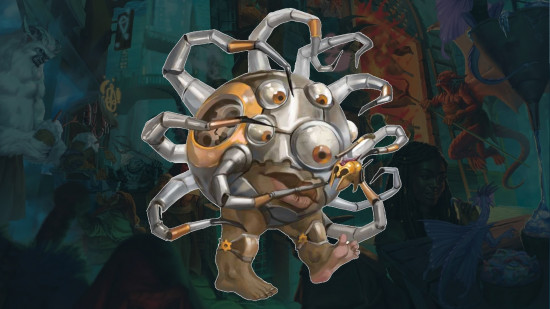Modrons are one of the best – and most easily overlooked – monster subtype in the whole of the DnD Monster Manual. Originating in the lawful neutral plane of Mechanus, they are entities of perfect order, but their rigid adherence to rules can make them hilarious, chaotic, and downright dangerous – a perfect addition to any DnD campaign.
You’ll find many types of Modron in the DnD 2014 Monster Manual, and we fully expect them to return when the new version of the MM hits the DnD release schedule in 2025. You’ll find rules for more Modrons, not to mention an intriguing Modron plot, in the most recent Planescape supplement; learn more about that in our Planescape: Adventures in the Multiverse review.
Modrons are a very strange, entirely artificial hive species. Though there are many Modrons, they never refer to themselves as individuals, instead talking about “we” and “us”. Each Modron has a strict position within the Modron hierarchy, and the importance, intellect, and power of a Modron is immediately visible in its shape.
A Monodrone – a spherical creature with a single eye, slender mechanical limbs, and stumpy wings – can perform exactly one task at a time. Two Monodrones are commanded by a cubic Duodrone, capable of doing two things, and three of those are controlled by a triangular-pyramid Tridrone… This carries on all the way up to the mighty Primus, the creator of the species.
Modrons share one overarching goal: to increase order in the multiverse. If that sounds like a very grand objective, which might be hard to communicate effectively through dozens of layers of dissemination to increasingly stupid lower level Modrons… then you’ve already got an idea why Modrons can fit into any adventure. Modrons could be doing literally anything in your campaign.
What if the dragon died a century ago, and a group of Modrons are maintaining an elaborate replica to fill its important ecological niche? What if the monastery that sheltered the Child of Prophecy was populated by Modrons, and now the chosen one speaks entirely in binary? What if Modrons open a bakery, the bread is incredibly good, and no-one ever finds out why?
While Modrons tend to hive around Mechanus, every 289 years the Great Modron March sets out to measure the universe and bring the data back to Primus. A mind-boggling number of Modrons participate in the march, and it sheds Modrons at a ferocious rate as they poke into all the lethal nooks and crannies of the multiverse. A lost cohort of Modrons could show up anywhere, be it Waterdeep, Ravenloft, or your homebrew campaign.
When a high-ranking Modron dies, an underling of the next lowest rank is immediately promoted in a flash of light, transforming right away to fill the vacant spot in the hierarchy. This cascades down through the ranks, filling in missing slots, until a new Monodrone is created by Primus in the Great Modron Cathedral on Mechanus.
This is handy for balancing fights on the fly. The DM can plausibly upgrade a Modron at a moment’s notice, mid fight; or even promote a Modron, then send it off to the other end of the cosmos to report to its new boss.
Personally, I see the Modrons as attempting to understand the cosmos by copying other sentient entities, without comprehending what those actions mean. They make for great background characters: a deadpan Modron at a food festival selling distilled water, “guaranteed flavor free”, in perfect hemispheres of gold “to absolutely ensure there is no flavor”. Modron Comedian, the Modron Comedian, working hard to ensure that its observational comedy routine is both observational and routine.
Sadly, there are no official rules for Modrons as a playable DnD race – yet. There are rogue modrons which, through damage or some other oddity, become isolated from the hive, and even begin to think of themselves as individuals.
For more great DnD content, make sure you check out our guides to all the DnD classes, as well as the DnD backgrounds. ‘Raised by Modrons’ would be a pretty great background, honestly.
Source: Wargamer




